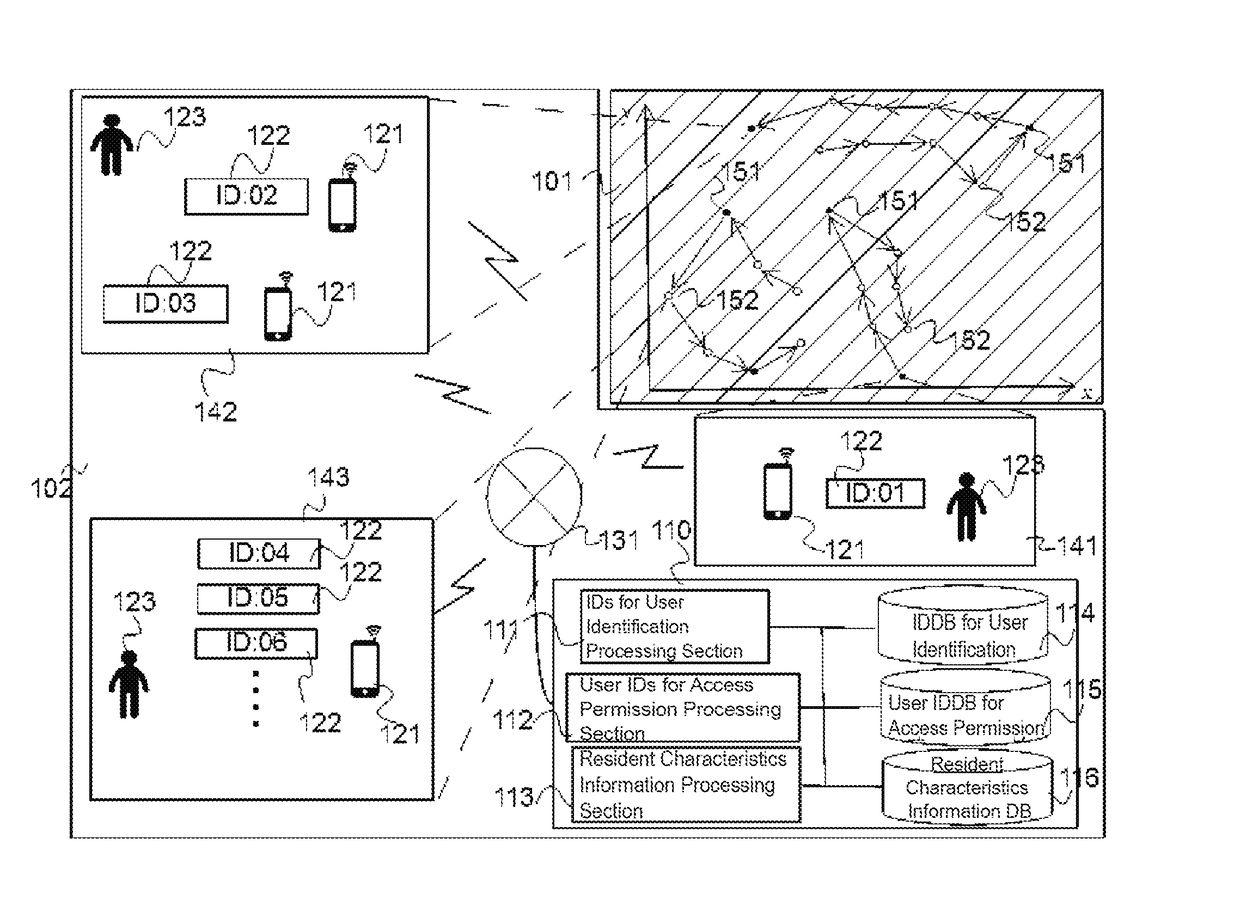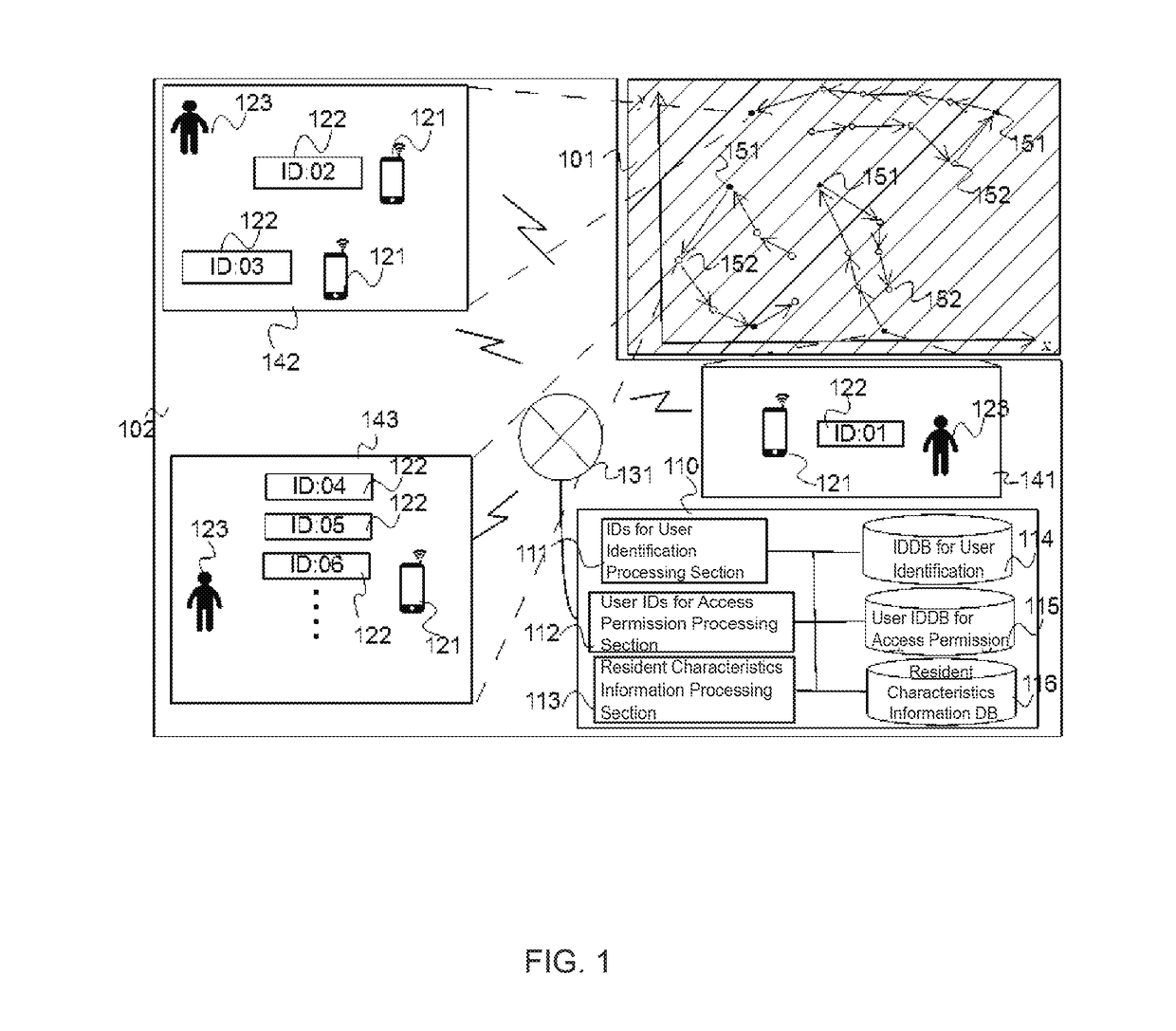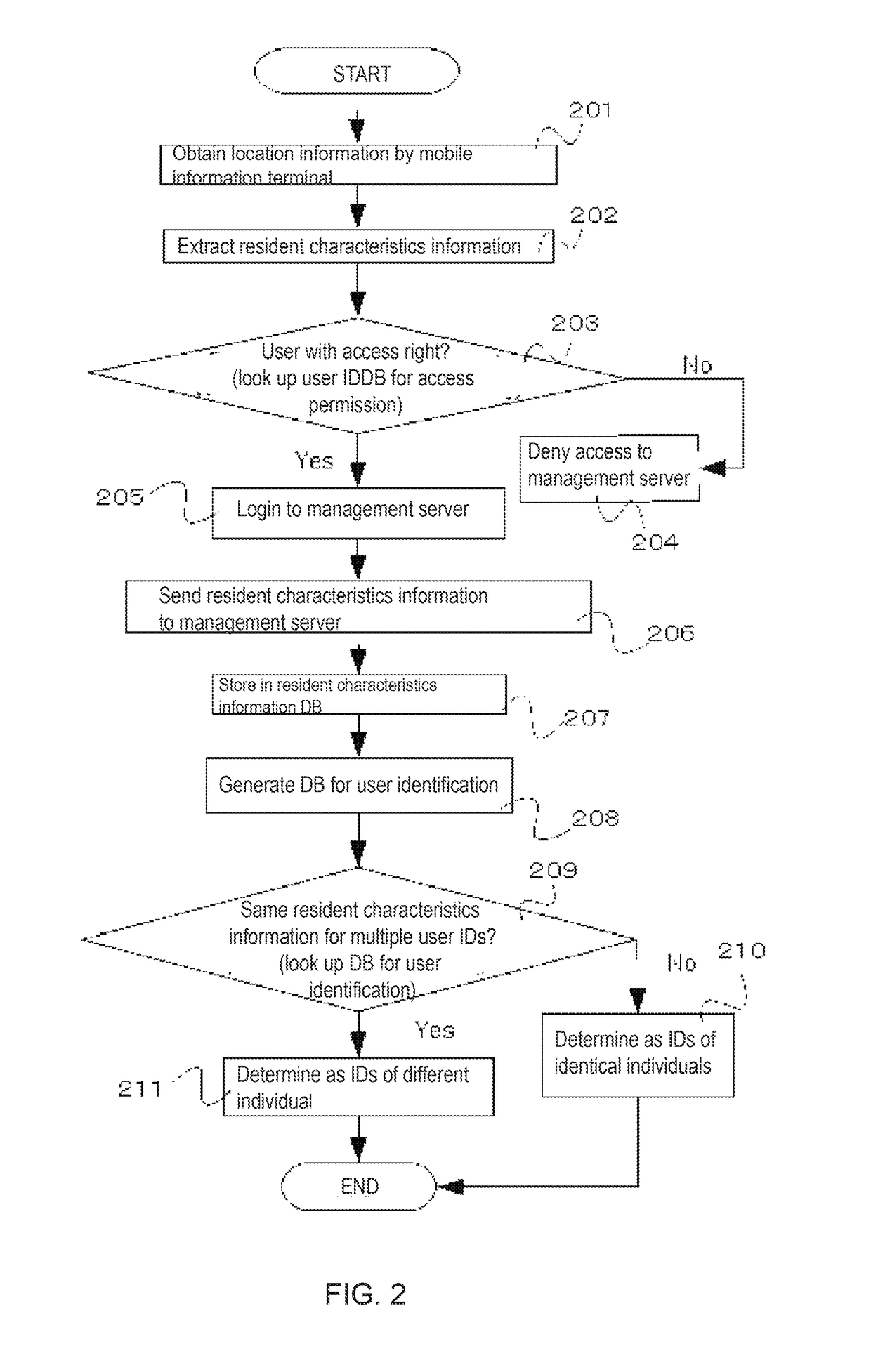System and method for processing personal identification information based on position information
- Summary
- Abstract
- Description
- Claims
- Application Information
AI Technical Summary
Benefits of technology
Problems solved by technology
Method used
Image
Examples
Embodiment Construction
[0159]Embodiments of the present invention will be described below using the accompanying drawings.
>
[0160]First, an individual identification information processing system based on resident characteristics information will be described below.
[0161]A section 101 of FIG. 1 (shaded section in FIG. 1) shows a conceptual diagram of location (position) information recorded when an individual 123 moves in real space with a mobile information terminal (hereinafter, referred to “mobile information terminal”), wherein the individual 123 is a user of the mobile information terminal which uses a network service; and a section 102 of FIG. 1 (sections other than the shaded section in FIG. 1) shows a conceptual diagram of the individual identification information processing system based on the resident characteristics information.
[0162]The individual identification information processing system comprises a large number of mobile information terminals 121 each connected with a communication network...
PUM
 Login to View More
Login to View More Abstract
Description
Claims
Application Information
 Login to View More
Login to View More - R&D
- Intellectual Property
- Life Sciences
- Materials
- Tech Scout
- Unparalleled Data Quality
- Higher Quality Content
- 60% Fewer Hallucinations
Browse by: Latest US Patents, China's latest patents, Technical Efficacy Thesaurus, Application Domain, Technology Topic, Popular Technical Reports.
© 2025 PatSnap. All rights reserved.Legal|Privacy policy|Modern Slavery Act Transparency Statement|Sitemap|About US| Contact US: help@patsnap.com



